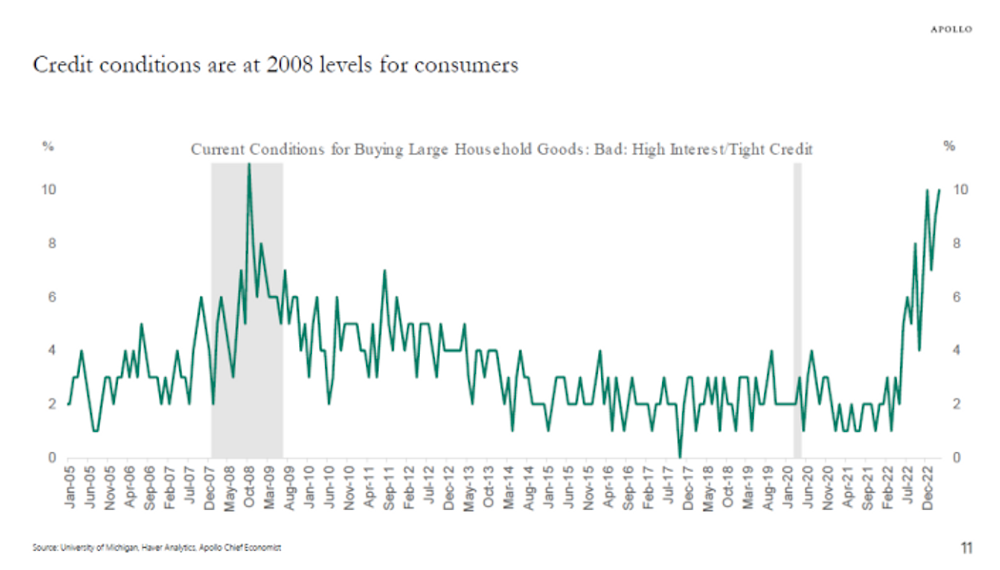WASHINGTON (MarketWatch)
Information received since the Federal Open Market Committee met in October indicates that economic activity is expanding at a moderate pace
Labor market conditions have shown further improvement; the unemployment rate has declined but remains elevated
Household spending and business fixed investment advanced, while the recovery in the housing sector slowed somewhat in recent months
Fiscal policy is restraining economic growth, although the extent of restraint may be diminishing Inflation has been running below the Committee’s longer-run objective, but longer-term inflation expectations have remained stable
Consistent with its statutory mandate, the Committee seeks to foster maximum employment and price stability
The Committee expects that, with appropriate policy accommodation, economic growth will pick up from its recent pace and the unemployment rate will gradually decline toward levels the Committee judges consistent with its dual mandate
The Committee sees the risks to the outlook for the economy and the labor market as having become more nearly balanced
The Committee recognizes that inflation persistently below its 2 percent objective could pose risks to economic performance, and it is monitoring inflation developments carefully for evidence that inflation will move back toward its objective over the medium term
Taking into account the extent of federal fiscal retrenchment since the inception of its current asset purchase program, the Committee sees the improvement in economic activity and labor market conditions over that period as consistent with growing underlying strength in the broader economy
In light of the cumulative progress toward maximum employment and the improvement in the outlook for labor market conditions, the Committee decided to modestly reduce the pace of its asset purchases
Beginning in January, the Committee will add to its holdings of agency mortgage-backed securities at a pace of $35 billion per month rather than $40 billion per month, and will add to its holdings of longer-term Treasury securities at a pace of $40 billion per month rather than $45 billion per month
The Committee is maintaining its existing policy of reinvesting principal payments from its holdings of agency debt and agency mortgage-backed securities in agency mortgage-backed securities and of rolling over maturing Treasury securities at auction
The Committee’s sizable and still-increasing holdings of longer-term securities should maintain downward pressure on longer-term interest rates, support mortgage markets, and help to make broader financial conditions more accommodative, which in turn should promote a stronger economic recovery and help to ensure that inflation, over time, is at the rate most consistent with the Committee’s dual mandate
The Committee will closely monitor incoming information on economic and financial developments in coming months and will continue its purchases of Treasury and agency mortgage-backed securities, and employ its other policy tools as appropriate, until the outlook for the labor market has improved substantially in a context of price stability
If incoming information broadly supports the Committee’s expectation of ongoing improvement in labor market conditions and inflation moving back toward its longer-run objective, the Committee will likely reduce the pace of asset purchases in further measured steps at future meetings
However, asset purchases are not on a preset course, and the Committee’s decisions about their pace will remain contingent on the Committee’s outlook for the labor market and inflation as well as its assessment of the likely efficacy and costs of such purchases
To support continued progress toward maximum employment and price stability, the Committee today reaffirmed its view that a highly accommodative stance of monetary policy will remain appropriate for a considerable time after the asset purchase program ends and the economic recovery strengthens
The Committee also reaffirmed its expectation that the current exceptionally low target range for the federal funds rate of 0 to 1/4 percent will be appropriate at least as long as the unemployment rate remains above 6-1/2 percent, inflation between one and two years ahead is projected to be no more than a half percentage point above the Committee’s 2 percent longer-run goal, and longer-term inflation expectations continue to be well anchored
In determining how long to maintain a highly accommodative stance of monetary policy, the Committee will also consider other information, including additional measures of labor market conditions, indicators of inflation pressures and inflation expectations, and readings on financial developments
The Committee now anticipates, based on its assessment of these factors, that it likely will be appropriate to maintain the current target range for the federal funds rate well past the time that the unemployment rate declines below 6-1/2 percent, especially if projected inflation continues to run below the Committee’s 2 percent longer-run goal. When the Committee decides to begin to remove policy accommodation, it will take a balanced approach consistent with its longer-run goals of maximum employment and inflation of 2 percent
Voting for the FOMC monetary policy action were: Ben S. Bernanke, Chairman; William C. Dudley, Vice Chairman; James Bullard; Charles L. Evans; Esther L. George; Jerome H. Powell; Jeremy C. Stein; Daniel K. Tarullo; and Janet L. Yellen. Voting against the action was Eric S. Rosengren
Information received since the Federal Open Market Committee met in October indicates that economic activity is expanding at a moderate pace
Labor market conditions have shown further improvement; the unemployment rate has declined but remains elevated
Household spending and business fixed investment advanced, while the recovery in the housing sector slowed somewhat in recent months
Fiscal policy is restraining economic growth, although the extent of restraint may be diminishing Inflation has been running below the Committee’s longer-run objective, but longer-term inflation expectations have remained stable
Consistent with its statutory mandate, the Committee seeks to foster maximum employment and price stability
The Committee expects that, with appropriate policy accommodation, economic growth will pick up from its recent pace and the unemployment rate will gradually decline toward levels the Committee judges consistent with its dual mandate
The Committee sees the risks to the outlook for the economy and the labor market as having become more nearly balanced
The Committee recognizes that inflation persistently below its 2 percent objective could pose risks to economic performance, and it is monitoring inflation developments carefully for evidence that inflation will move back toward its objective over the medium term
Taking into account the extent of federal fiscal retrenchment since the inception of its current asset purchase program, the Committee sees the improvement in economic activity and labor market conditions over that period as consistent with growing underlying strength in the broader economy
In light of the cumulative progress toward maximum employment and the improvement in the outlook for labor market conditions, the Committee decided to modestly reduce the pace of its asset purchases
Beginning in January, the Committee will add to its holdings of agency mortgage-backed securities at a pace of $35 billion per month rather than $40 billion per month, and will add to its holdings of longer-term Treasury securities at a pace of $40 billion per month rather than $45 billion per month
The Committee is maintaining its existing policy of reinvesting principal payments from its holdings of agency debt and agency mortgage-backed securities in agency mortgage-backed securities and of rolling over maturing Treasury securities at auction
The Committee’s sizable and still-increasing holdings of longer-term securities should maintain downward pressure on longer-term interest rates, support mortgage markets, and help to make broader financial conditions more accommodative, which in turn should promote a stronger economic recovery and help to ensure that inflation, over time, is at the rate most consistent with the Committee’s dual mandate
The Committee will closely monitor incoming information on economic and financial developments in coming months and will continue its purchases of Treasury and agency mortgage-backed securities, and employ its other policy tools as appropriate, until the outlook for the labor market has improved substantially in a context of price stability
If incoming information broadly supports the Committee’s expectation of ongoing improvement in labor market conditions and inflation moving back toward its longer-run objective, the Committee will likely reduce the pace of asset purchases in further measured steps at future meetings
However, asset purchases are not on a preset course, and the Committee’s decisions about their pace will remain contingent on the Committee’s outlook for the labor market and inflation as well as its assessment of the likely efficacy and costs of such purchases
To support continued progress toward maximum employment and price stability, the Committee today reaffirmed its view that a highly accommodative stance of monetary policy will remain appropriate for a considerable time after the asset purchase program ends and the economic recovery strengthens
The Committee also reaffirmed its expectation that the current exceptionally low target range for the federal funds rate of 0 to 1/4 percent will be appropriate at least as long as the unemployment rate remains above 6-1/2 percent, inflation between one and two years ahead is projected to be no more than a half percentage point above the Committee’s 2 percent longer-run goal, and longer-term inflation expectations continue to be well anchored
In determining how long to maintain a highly accommodative stance of monetary policy, the Committee will also consider other information, including additional measures of labor market conditions, indicators of inflation pressures and inflation expectations, and readings on financial developments
The Committee now anticipates, based on its assessment of these factors, that it likely will be appropriate to maintain the current target range for the federal funds rate well past the time that the unemployment rate declines below 6-1/2 percent, especially if projected inflation continues to run below the Committee’s 2 percent longer-run goal. When the Committee decides to begin to remove policy accommodation, it will take a balanced approach consistent with its longer-run goals of maximum employment and inflation of 2 percent
Voting for the FOMC monetary policy action were: Ben S. Bernanke, Chairman; William C. Dudley, Vice Chairman; James Bullard; Charles L. Evans; Esther L. George; Jerome H. Powell; Jeremy C. Stein; Daniel K. Tarullo; and Janet L. Yellen. Voting against the action was Eric S. Rosengren




















5 comentarios:
RTVE.es
La Reserva Federal (Fed) de Estados Unidos reducirá de 85.000 a 75.000 millones de dólares sus compras mensuales de bonos del Tesoro y títulos hipotecarios, porque la economía del país ha mejorado hasta un punto en el que ya se justifica el comienzo del fin de su programa de estímulos monetarios.
Así lo ha decidido al término de su última reunión del año el Comité de Mercado Abierto de la Reserva Federal.
En un comunicado, la Fed apunta que, "teniendo en cuenta el grado de ajuste fiscal" desde que puso en marcha el programa de compra de activos, el Comité ve "una mejora de las condiciones de la actividad económica y del mercado laboral en consonancia con la creciente fortaleza subyacente de la economía en general".
"Tras el progreso acumulado en el camino al máximo empleo y la mejora de la perspectiva de las condiciones del mercado laboral, el Comité decidió reducir modestamente el ritmo de sus compras de activos", señala la Fed.
Mejora la previsión de crecimiento
De este modo, el escenario central de la Fed contempla un crecimiento del PIB de entre el 2,2% y el 2,3% este año, cuando en septiembre esperaba una expansión de entre 2% y el 2,3%.
Asimismo, de cara a 2014 augura una expansión de entre el 2,8% y el 3,2%, frente a la anterior previsión de entre el 2,9% y el 3,1%.
Por el contrario, el banco central estadounidense ha recortado levemente las previsiones de 2015, desde entre el 3% y el 3,5% a entre el 3% y el 3,4%, y las de 2016, desde el 2,5% al 3,3% a entre el 2,5% y el 3,2%.
Asimismo, ha revisado ligeramente al alza sus expectativas de recuperación en el mercado laboral, lo que permitiría cerrar este año con una tasa de paro de entre el 7% y el 7,1%, frente a la horquilla del 7,1% al 7,3% previsto hace tres meses.
En 2014, el desempleo en EE.UU. continuaría con su senda descendente hasta situarse entre el 6,3% y el 6,6%, por debajo del anterior rango de entre el 6,4% y el 6,8%, mientras que en 2015 oscilaría entre el 5,8% y el 6,1% y en 2016 entre 5,3% y el 5,8%, una décima menos de lo que esperaba en septiembre en todos los porcentajes.
Por otro lado, ha mantenido una vez más los tipos de interés en un rango objetivo de entre el 0% y el 0,25%, y ha vuelto a garantizar unos tipos en niveles "excepcionalmente bajos", al menos hasta que la tasa de paro continúe por encima del 6,5% y mientras las expectativas de inflación a uno o dos años no superen el 2,5%.
TOKYO (Nikkei) -- The Japanese government intends to reduce new bond offerings by Y1.6 trillion on the year to around Y41.3 trillion for fiscal 2014 as higher tax revenue lessens the need to issue debt, The Nikkei reported in its Friday morning editions.
In its medium-term fiscal policy approved in August, the government decided that new bond issues in fiscal 2014 would not exceed the current fiscal year's figure. One contributing factor for the lower number is an anticipated rise in tax revenue to Y50 trillion, up from this fiscal year's initial forecast of Y43.1 trillion.
Rising social security costs and accounting changes involving special accounts will push the size of the general account budget to Y96 trillion, a record high for an initial budget, compared with Y92.6 trillion this fiscal year. The portion that excludes debt-servicing costs, including social security and public works spending has been set at the upper end of the Y72 trillion range, higher than this fiscal year's Y70.4 trillion.
The deficit in the primary balance, which shows the difference between revenue and spending not linked to debt-servicing will shrink nearly Y5 trillion thanks to higher tax revenues and more than Y4 trillion in nontax revenues. This will mark progress toward the government's pledge to halve the deficit by fiscal 2015.
The cabinet will adopt the fiscal 2014 draft budget Tuesday. Since final bargaining over such spending as medical treatment fees will be held over the weekend, the final size of the general account may change.
Publicar un comentario